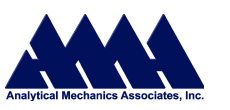| |
NEAR Response Surface Package FAQ
Frequently Asked Questions
- How many dimensions in input and output space can the code accommodate?
- The method does not have a limit on number of dimensions. Arrays are autoallocated. We have run the program with as many as 100 input dimensions (independent variables). Output dimension is always one (i.e. there is one Response Surface per dependent variable). There is no limit on the number of dependent variables that can be handled simultaneously. The only real limitations have to do with memory size. There is a limit on the number of data points per zone, on the order of 1000 data points (less if the problem is stiff).
- It is stated that fuzzy logic is involved in the interpolation. What does fuzzy logic accomplish in this circumstance that the radial basis functions cannot?
- Fuzzy Logic (FL) is used as a way of blending individual Radial Basis Functions (RBF) Response Surfaces together. The FL is used for weighted averaging between the individual (zonal) Response Surfaces. The decision as to whether or not (and how) to break up a data set into clusters (zones) to be individually fit is up to the user. This is not necessary, but the user may take advantage of this capability if he/she has prior knowledge. Sometimes it is advantageous to break up a data set in regions where large gradients exist.
- What platforms and software requirements does the software require?
- The software runs on Windows-XP (using the Cygwin™ environment) as well as Linux i386 and Mac OS X platforms.
- The graphical user interface (available only in some versions) is built on the Tcl scripting lanquage and uses Tk/Octave and the GNU Octave numerical environment. Gnuplot is used for on-screen plot displays but the software can export the data for use in Tecplot.
- How are you licensing this software?
- There is a one-time license fee. Contact NEAR for licensing fees for your organization.
- There will be a Software License Agreement (SLA) to be entered into and between NEAR and your organization. This SLA will be prepared when NEAR receives the purchase order (PO) for the license.
- The software is distributed with installation instructions, HTML documentation. The NEAR proprietary portion of the software is in executable format.
- Code Maintenance and Support are available for an additional fee.
References:
- Reisenthel, P. H., Love, J. F., Lesieutre, D. J., and Childs, R. E., "Cumulative global metamodels with uncertainty -- a tool for aerospace integration." To be published in The Aeronautical Jounal, June 2006.
- Reisenthel, P. H., Love, J. F., Lesieutre, D. J., and Dillenius, M. F. E. D., "Innovative Fusion of Experiment and Analysis for Missile Design and Flight Simulation," Paper 23, Proceedings of the RTO AVT-135 Symposium on Innovative Missile Systems, Amsterdam, The Netherlands, May 15-19, 2006. Download Abridged Slide Presentation.
- Reisenthel, P. H., Love, J. F., Lesieutre, D. J., and Childs, R. E., "Cumulative Global Metamodels with Uncertainty: a Tool for Aerospace Integration," NEAR Paper 403, CEIAT 2005-0019, 1st International Conference on Innovation and Integration in Aerospace Sciences, Queen's University, Belfast, Northern Ireland, UK, 4-5 Aug. 2005. Download Slide Presentation.
- Rodman, L. C., Reisenthel, P. H., Childs, R. E., "An Automated Documentation and Reporting System For CFD," AIAA 2002-0986 , Nielsen Engineering & Research, Mountain View, CA, Jan. 2002.
|
|
|

|





